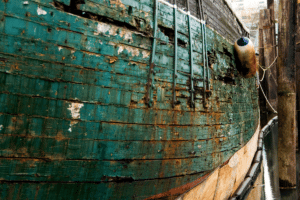Seamen who work on any vessel on the open waters know that there are certain risks they must accept as part of their job. A ship, boat, or other waterborne vehicle is in an environment that can often be dangerous even under the best of conditions. Because of this ever-present risk, seamen need to live and work on vessels that are well-built, in good shape, and safe. This concept, in terms of maritime law, is called “seaworthiness.” When a vessel is not in seaworthy condition, a myriad of accidents and injuries are bound to happen, which could have been easily prevented with proper maintenance and safety. When accidents occur on unseaworthy vessels, the employer is typically liable for damages.

What is an Unseaworthy Vessel?
Under admiralty law, a vessel’s owner has a responsibility to make sure that the vessel and all its equipment is in a reasonable state of fitness in order to carry out its assigned tasks. The hull, superstructure, decks, engines, hatches, fuel tanks, navigational and communications equipment, and all tools and fittings must be in good shape so that the crew can safely live and work on a vessel.
However, if a vessel or any of its operational components is not in a reasonable state of fitness and its ability to perform its job is diminished, the vessel is considered “unseaworthy.” This doesn’t necessarily mean that an unseaworthy vessel can’t travel on water, but that it can’t perform its designated task. For instance, a fishing trawler with a strong hull, well-maintained engines, and flawless navigation equipment can still be considered unseaworthy if other parts necessary for its duties as a fishing trawler are not in optimal shape.
If a crew member is injured because a rusted ladder breaks and he falls and breaks an arm or leg, he can file a claim saying that the vessel is unseaworthy. The state of the other components may be good, but the rusted ladder was not in a reasonable state of fitness. Since the employer did not prevent the accident by replacing the defective ladder, the obligation to provide workers with a seaworthy vessel was not met.
Other examples include:
- Not enough work crew or an incompetent, untrained work crew
- Any defective equipment and machinery
- Dangerous products that can cause injuries, such as oil and grease
- Unsafe recreational facilities
Owners and the Provision of Seaworthy Vessels: The Concept of Absolute Duty
In maritime law, the ownership of a vessel is governed by a concept known as absolute duty. Per several rulings in Jones Act cases in federal court, judges have observed that employers have a binding obligation to provide seamen with seaworthy vessels. This absolute duty clause requires owners to keep vessels in working order, with the expectation that any defective parts necessary for its operation are either repaired or replaced to prevent injuries to the crew.
If employers fail to provide seaworthy vessels, they may be liable to damages for injuries, which include lost wages, daily living expenses, medical expenses, unearned wages, and more. In addition, criminal charges may result if someone knowingly and willingly sends seamen to work on a vessel that’s considered unseaworthy. Per the United States Code 46 § 10908, penalties may result in prison time of up to five years and/or a $1,000 fine.